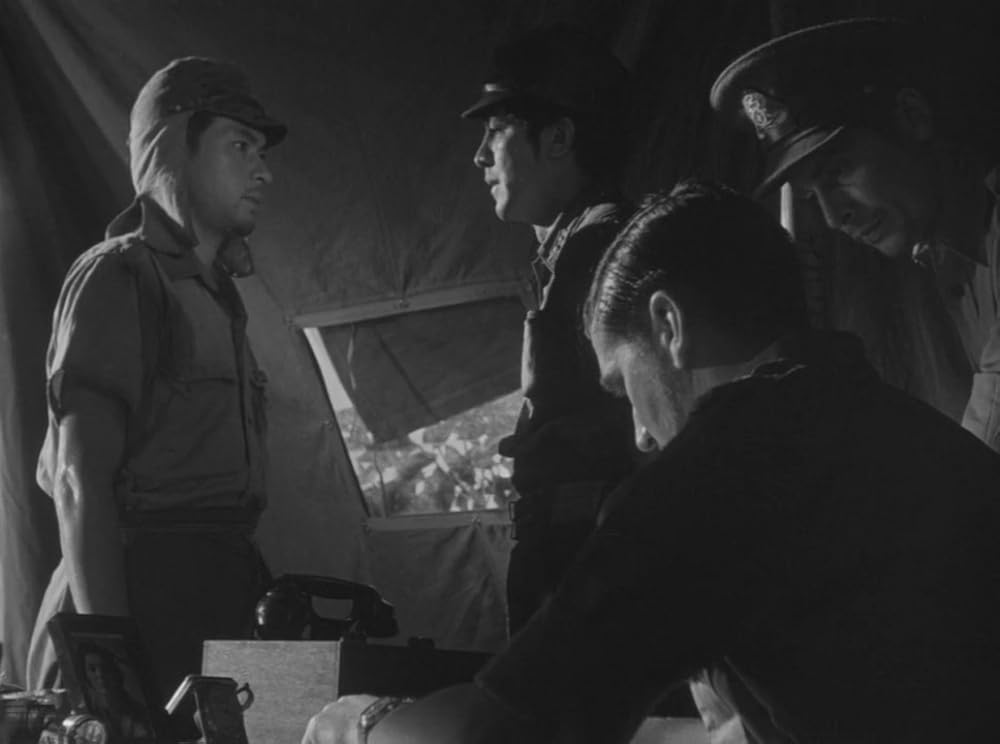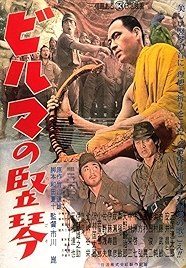After a career banging out one makeweight movie after another, on the 27th go director Kon Ichikawa hit paydirt with The Burmese Harp. A box-office smash and critical hit at home in Japan and abroad, it propelled Ichikawa into the ranks of internationally celebrated Japanese directors, alongside Kurosawa, Ozu, Mizoguchi et al.
It’s worth remembering the Japanese martial code before diving into this strangely meditative drama – death before dishonour, to boil it down – and that the surrender by the Japanese emperor in 1945 had been seen by many in the military as an act of treason.
The film deals with that surrender and the acceptance, or lack of acceptance, of it. But it also celebrates camaraderie and the social cohesion that powered Japan through the war and was now – this was released in 1956 – powering it through the peace.
These different themes coalesce in the story of Mizushima (Shôji Yasui), a harp-playing soldier in a platoon captained by the benign Captain Inouye (Rentarô Mikuni). Early on, the war ends for Mizushima, Inouye and crew when they learn that Japan has surrendered. But not all fighting divisions of the Japanese army are willing to lay down their arms. Mizushima is volunteered to head up to Triangle Mountain, where a particularly recalcitrant unit still fights on, to persuade them that they should wave the white flag.
Mizushima puts it to them that it is the right thing to do but also the only thing to do – this is do or die time. The captain and his men refuse and are apoplectic that anyone should even suggest such a dishonourable course of action. Which leads – in a ballistic echo of the annihilation of Hiroshima – to the wiping out of all of them in a massive assault.
The only survivor is Mizushima, who is nursed back to health by a Buddhist monk. Later, recovery mostly achieved but still in a state of shock, Mizushima steals some robes, shaves his head and sets off on a long trek to rejoin his guys, posing as a Burmese monk. En route he comes across a detachment of Japanese soldiers all frozen in attitudes of death and decay. Sickened by the smell of putrefaction, he nevertheless pauses his travels to bury them. An accidental journey towards Buddhism has begun.
By the time he encounters his old old unit again Mizushima is a man transformed. But not so much that his fellow soldiers don’t recognise him, or think they do.

This is actually where the bulk of the story plays out, in a strange to and fro between Mizushima, refusing to disclose who he really is, and his comrades-in-arms winding themselves into a state over the true identity of this harp-playing mystery monk.
Everyday speech is not the servant of truth in this film. That resides elsewhere. In Mizushima’s harp. In the sentimental song the soldiers sing (English speakers know it as Home! Sweet Home!). In the parrot that Mizushima adopts. In the landscape. In the statues of the Buddha dotted around.
For all the occasional moments of brutality, which Ichikawa does not shy away from, this is an amazingly sweet, tender film, more about denail of the self than heroic individualism. What is it the Japanese soldiers were fighting for? The glory of their country. What will they fight for now? Its glory in peacetime as a heroically successful nation. You can see why Ichikawa’s film was successful in Japan – it bridges a gulf and suggests the same Japanese spirit prevails in both situations. And abroad it presents the Japanese as accepting their defeat. A monk, a parrot, a harp and a song – they’re hardly threatening.
Does that also explain the strangely flat shooting style, or has the image just degraded over time? There is some debate about this. The Criterion restoration pumps up the contrast a bit. The Eureka version is the flat one, though there is more detail in the image. Personally I prefer the slightly starker Criterion image. The guys at dvdbeaver.com (who have forgotten more about image quality than I’ll ever know) go for the Eureka. I’ll link to both below. Pick a side.
Incidentally, the rather excellent Kitabayashi Tanie, who plays the old woman hawking nicknacks to the soldiers while they wait to go home, would also play the same role when Ichikawa remade his own film, in 1985, and enthralled another generation.
The Burmese Harp – the Criterion version at Amazon
The Burmese Harp – the Eureka version at Amazon
I am an Amazon affiliate
© Steve Morrissey 2024

